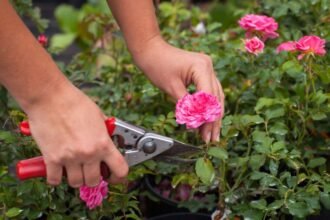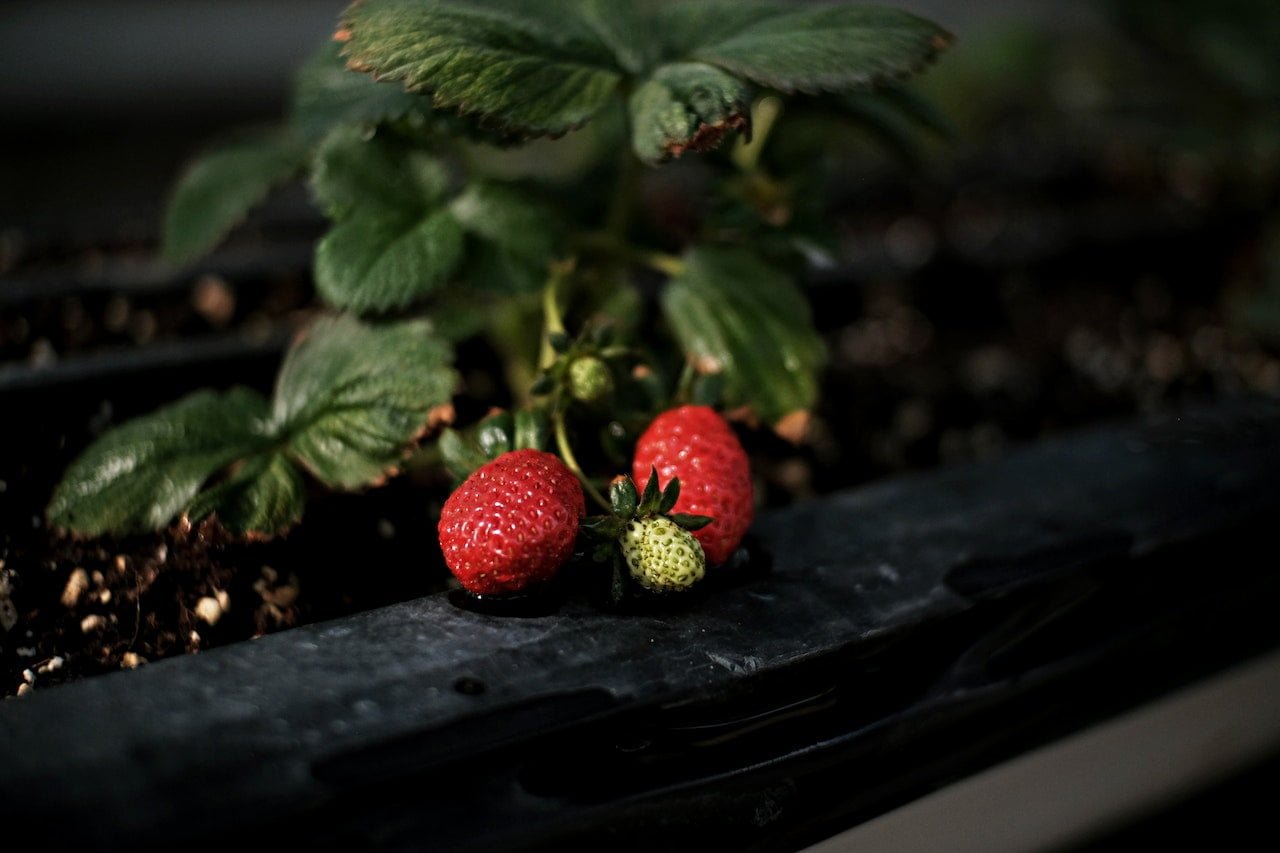Pine needle mulch also known as pine straw is a popular material used in landscaping due to the various advantages it offers, including the capacity to inhibit the growth of weeds, keep water in the soil, and prevent erosion. The product known as pine straw is created by collecting pine needles that have already fallen to the ground. It is a useful and adaptable product that can be used in both houses and gardens.
In the United States, recent estimates place the annual revenue from the sale of pine straw at over $100 million, and its popularity is only likely to expand as more people become aware of the multiple functions that it may serve. Because of its natural beauty and long lifespan, pine straw is an option that is both environmentally friendly and cost-effective when it comes to gardening and landscaping.
In the following article, I will discuss the advantages of using pine straw in gardening, as well as provide some pointers on how you might put those advantages to use in your own yard.
What is Pine Straw
Pine straw is pine needle mulch. It has many gardening and landscaping uses. Pine straw can be gathered manually or mechanically and raked into straight rows and bales for convenience. Eco-friendly homes love pine straw’s organic mulch. It is also cheaper than wood chips or bark.
Pine straw helps maintain soil moisture, weed control, temperature, and structure. Pinus needles are hydrophobic. The soil is protected from air, retaining moisture. Mulch limits weeds’ photosynthetic light.
Pine straw is useful and attractive for landscaping and gardening projects. The lovely golden brown needles blend perfectly with the vegetation. Needles decompose, enriching the soil.
Pine straw mulches flower beds, vegetable gardens, and hillsides. It can be used as mulch or ground cover around trees and plants because it retains moisture and moderates soil temperature. Pine straw is ideal for homeowners who desire low-maintenance landscaping that looks good.
Also See: Green Thumbs Rejoice: The Best 20 Raised Garden Bed Id
Origin of Pine Straw
Pine straw has been used as mulch and decoration in landscaping and gardening since the beginning of agriculture, when farmers and gardeners used what they had. Pine needles, which are native, have been used as mulch for centuries. North America, Europe, and Asia. The South uses pine needles as mulch. Pine straw baling for mulch has become widespread in the US and elsewhere.
Pine straw’s beauty and utility in landscaping and gardening have made it popular in homes and businesses. Pine straw is popular with homeowners and landscapers due to its availability, benefits, and attractive appearance.
Uses of Pine Straw
Mulch made from pine needles, also known as “pine straw,” is a popular landscaping material. Because of its adaptability, pine straw has recently surpassed more traditional types of mulch, such as bark chips and leaves, in terms of appeal. The following are some of the most common and widespread applications for pine straw:
It is Used in Landscaping
The use of pine straw brings to a significant increase in the visual value of landscape features such as flowerbeds, lawns, and gardens. The weed-controlling, water-retaining, erosion-preventing, and organically pleasing features it possesses are all beneficial to landscape design.
Pine straw is aesthetically beautiful due to its light golden brown colour, which provides a striking contrast to the deep green of the vegetation that surrounds it.
Used in Agricultural Applications
When it comes to agriculture, one of the more common options for protecting the soil is to use pine straw. Because it acts as a barrier between the soil and the elements, it lowers the likelihood of problems such as drought, temperature extremes, and soil erosion.
Pine straw mulch is excellent in orchards and vineyards because of its ability to control soil temperature, reduce soil compaction, and inhibit the growth of weeds.
Used to Prevent Soil Erosion
Pine straw is helpful in preventing another issue known as soil erosion, particularly on slopes and other types of terrain that are steep. The structure of pine straw, which is similar to needles, impedes the flow of soil, and the fibrous quality of pine straw keeps soil moist and decreases erosion.
Pine straw is often used in conjunction with other erosion control measures, such as terracing and planting plants, in order to ensure that the prevention of soil erosion is as efficient as it can possibly be.
Also See: Unleash Your Creativity: 33 Backyard Landscaping Ideas to Try
5 Benefits of Pine Straw over other Mulches
Mulching with pine straw is something that many homeowners and gardeners do, and it’s a popular choice. The production of pine straw, which has a number of advantages over other types of mulch choices, requires the usage of pine needles. The following is a list of the key benefits that pine straw offers:
1. Long-lasting
Pine straw has a naturally high resistance to rotting, which makes it a great choice for use as mulch. Because pine straw does not decompose as rapidly as other types of mulch, such as leaves or bark chips, it can be used for a longer period of time before needing to be replaced.
Pine straw is an economical alternative due to the fact that it requires less repairs and fewer replacements over the course of its lifetime for these reasons.
2. Aesthetic Appeal
The natural golden brown colour of pine straw provides an attractive contrast to the lush green of the surrounding flora. The needles of pine straw have a particular texture, which makes them a more fascinating component to use into any garden or landscape design.
Because of its appealing appearance, pine straw is frequently used as a material in gardening.
3. Cost-effective
Mulch created from pine straw can end up saving you money in the long run. Pine straw, in contrast to other types of mulch, does not need to be renewed as frequently and requires very little maintenance once it has been spread out. Pine straw is often packaged and sold in large bales.
This makes it easier to handle and unload, which in turn reduces the amount of labour required, which in turn lowers the cost of installation.
4. Effective Weed Suppression
Because of its capacity to inhibit the growth of weeds, pine straw is a terrific material for gardeners and others who work in landscaping. Needles from pine straw can be compacted together to form a substantial layer that sits atop the soil and prevents the growth of weeds.
This decreases the amount of time that must be spent weeding the garden, which makes it much easier to maintain a weed-free environment in the garden.
5. Moisture Retention
Pine straw is quite effective in preventing the soil from drying up, which enables it to be helpful even in dry areas. The needles of pine straw slow down the rate at which water is lost from the soil, making it an environment that is more favourable to the growth of plants.
This not only helps to reduce the amount of water that is wasted, but it also helps to reduce the amount of time and materials that are wasted.
How to Lay Pine Straw
Improving the overall beauty of your outdoor space may be done in a way that is uncomplicated and won’t cost you a lot of money by adding pine straw as a layer to your garden, grass, or flowerbeds. The following will give you with instructions for laying down pine straw.
Prepare the area
To begin, rake the area after it has been completely cleared of any existing grass or weeds. Before spreading pine straw on a sloped area, cover the ground with garden cloth to prevent the soil from washing away.
Measure the area
Find out the length and width of the area that will be covered in mulch. After that, one is able to calculate the necessary quantity of pine straw.
Purchase the pine straw
Pine straw may be found in bales at the majority of garden centres and landscape supply stores, making it simple to transport and store. Pine straw of poor quality can get matted and lose its ability to retain moisture and control weed growth; thus, it is essential to make an investment in pine straw of high quality.
Spread a layer of pine straw
To begin, spread a very thin layer of pine straw across the surface of the ground. In a perfect world, the thickness of this layer would be around two inches. It will be easier to prevent the growth of weeds thanks to the thin layer of pine straw that has been laid down as the base for the mulch.
Add more layers
Continue to lay down additional pine straw in even layers and fluff it up as you go along. The recommended thickness for the last layer is about three inches. Because of this, your garden will not only look nicer, but it will also be healthier and contain less weeds.
Apply additional mulch
To achieve a look that is more complete, apply a second layer of mulch, such as pine bark or leaves. Your garden will have an appearance that is more natural as a result of this, and it will also be easier to prevent weed growth and retain water in the soil.
Maintenance
In spite of the fact that pine straw is very durable, it needs to be checked on a regular basis to make sure that it has not matted or deteriorated. It is recommended to stack the pine straw several times for it to be as effective as possible; therefore, more should be added if it is required.
Maintenance of Pine Straw
Mulch made of pine straw is popular since it lasts for a long time and requires little maintenance to keep it looking good. Pine straw is an excellent choice for suppressing the growth of weeds, maintaining the moisture content of the soil, and improving the appearance of your yard; nevertheless, it does require routine maintenance in order to continue functioning at its optimum level. You may preserve the appearance of your pine straw mulch in a number of different methods, including the following:
Check for Decay
Pine straw is naturally resistant to rot and decay; nevertheless, if it is exposed to the outdoors for an extended period of time, it will eventually deteriorate. It’s important to be vigilant about the condition of your pine straw because it may deteriorate very rapidly; telltale signs include matting and yellowing.
In the event that there is any sign of deterioration, it is possible that additional pine straw may be required to restore its efficacy.
Remove Weeds
Even though pine straw is fantastic for preventing weeds from sprouting, it is possible for weeds to still appear even when the area is covered with pine straw. Any weeds that have made their way through the mulch should be carefully pulled out so that the soil underneath is not damaged.
Watering
Even though pine straw is great at preventing the soil from drying out and keeping it moist, it is still important to water your plants on a regular basis. Don’t forget to give your plants plenty of water, but make sure to keep the water away from the mulch to stop the pine needles from sticking together.
Fluffing
If pine straw is allowed to get compacted over time, its ability to keep moisture in the soil and prevent the growth of weeds may be reduced. If you fluff up your pine straw once every few months, you can prevent this from happening and maintain it looking and feeling as fresh as new.
Replacing
Pine straw is a long-lasting material, however it does degrade over time and eventually needs to be replaced. When pine straw begins to seem worn or has deteriorated from its initial form, it should be changed. This is because pine straw does not last forever. It needs to be replaced if it has been worn down to a depth of less than two inches.







